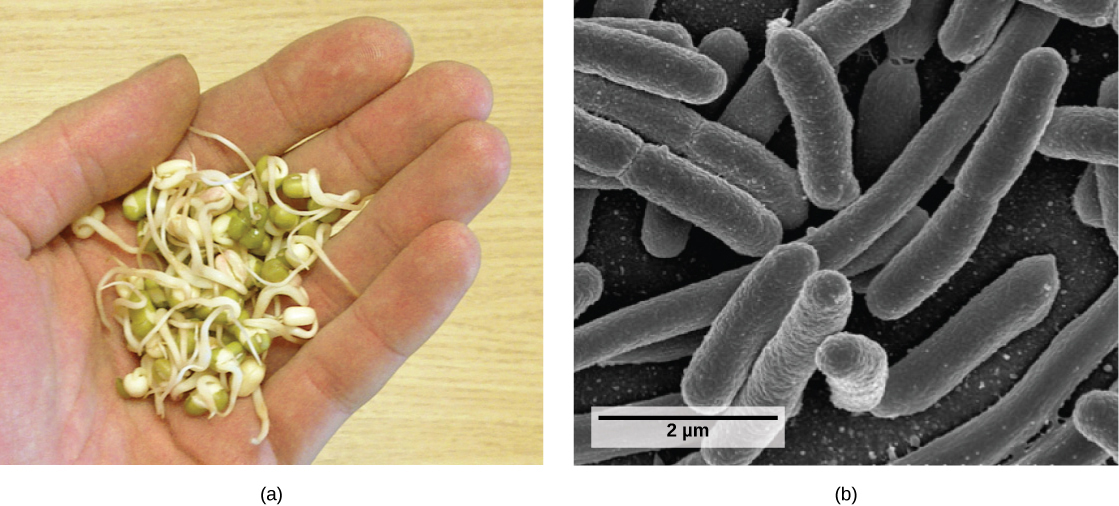| << Chapter < Page | Chapter >> Page > |
The characteristics of foodborne illnesses have changed over time. In the past, it was relatively common to hear about sporadic cases of botulism , the potentially fatal disease produced by a toxin from the anaerobic bacterium Clostridium botulinum . A can, jar, or package created a suitable anaerobic environment where Clostridium could grow. Proper sterilization and canning procedures have reduced the incidence of this disease.
Most cases of foodborne illnesses are now linked to produce contaminated by animal waste. For example, there have been serious, produce-related outbreaks associated with raw spinach in the United States and with vegetable sprouts in Germany ( [link] ). The raw spinach outbreak in 2006 was produced by the bacterium E. coli strain O157:H7. Most E. coli strains are not particularly dangerous to humans, (indeed, they live in our large intestine), but O157:H7 is potentially fatal.

All types of food can potentially be contaminated with harmful bacteria of different species. Recent outbreaks of Salmonella reported by the CDC occurred in foods as diverse as peanut butter, alfalfa sprouts, and eggs.
Epidemiologists collect data about a particular disease and track its spread to identify the original mode of transmission. They sometimes work in close collaboration with historians to try to understand the way a disease evolved geographically and over time, tracking the natural history of pathogens. They gather information from clinical records, patient interviews, and any other available means. That information is used to develop strategies and design public health policies to reduce the incidence of a disease or to prevent its spread. Epidemiologists also conduct rapid investigations in case of an outbreak to recommend immediate measures to control it.
Epidemiologists typically have a graduate-level education. An epidemiologist often has a bachelor’s degree in some field and a master’s degree in public health (MPH). Many epidemiologists are also physicians (and have an MD) or they have a PhD in an associated field, such as biology or epidemiology.
Not all prokaryotes are pathogenic. On the contrary, pathogens represent only a very small percentage of the diversity of the microbial world. In fact, our life and all life on this planet would not be possible without prokaryotes.

Notification Switch
Would you like to follow the 'Concepts of biology' conversation and receive update notifications?